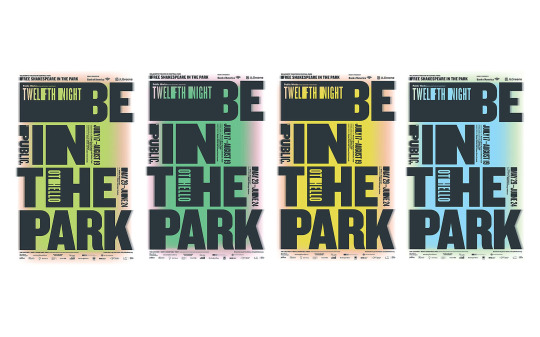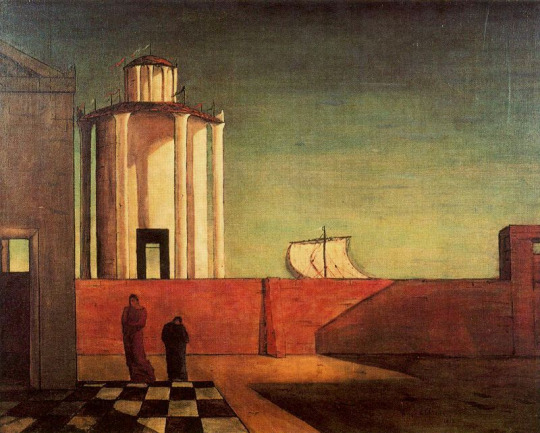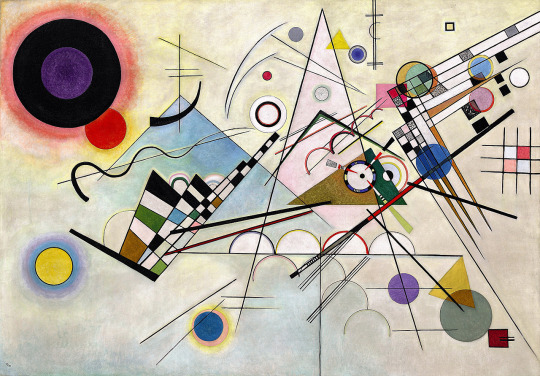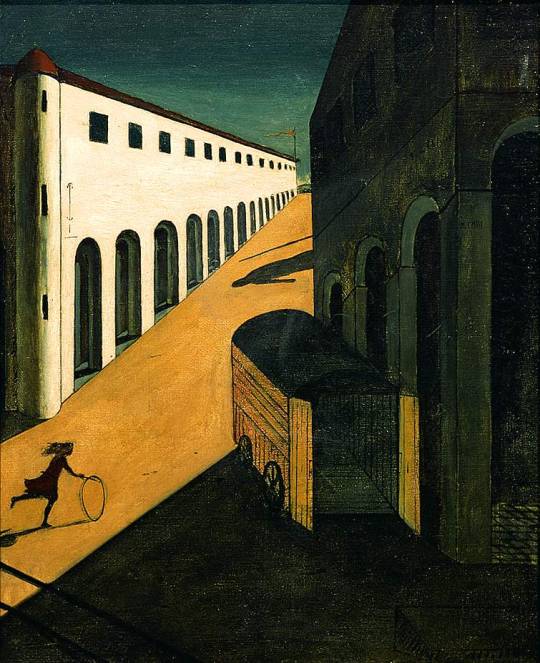#DeChirico
Explore tagged Tumblr posts
Text
WOII: Week 1 - Phenomenology
Today's session explored phenomenology through shadows and time, focusing on how perception is shaped by lived experience. Using photography and drawing, I examined how light and shadow are not just visual elements, but also emotional and embodied experiences.
Phenomenology emphasizes how we experience the world through perception, highlighting subjective experience over objective truths. In design, this is critical, as it deepens engagement with how users interpret visual elements. Shadows, for example, carry emotional weight beyond their visual form, shaped by time and memory. In my photographic work, I noticed how shadows shift throughout the day, reflecting time's fluidity. This aligns with Merleau-Ponty’s idea of embodied perception, suggesting that our experience is always mediated by consciousness (Merleau-Ponty 213). Kandinsky’s theories on abstraction also show how visual elements transcend their physical form to evoke emotions (Kandinsky 89), a key understanding for designers.
The drawing exercise connected these ideas to design practice. By representing literal shadows, I revealed deeper meanings absence, identity, and the passage of time concepts designers can use to communicate beyond the surface. Paula Scher’s typography demonstrates how form and layout influence perception, much like shadows shape space (Scher 45). Giorgio de Chirico’s surrealist works use exaggerated shadows to create a dreamlike atmosphere, emphasizing the storytelling power of light and form (de Chirico 102). Phenomenology teaches that design is not just about aesthetics but also about the emotional and experiential responses it evokes.
Total word count: 253 Words



------------------------------------------------------------------------------
Works Cited
de Chirico, Giorgio. The Enigma of Arrival and the Afternoon. Thames & Hudson, 1995.
Husserl, Edmund. The Phenomenology of Internal Time-Consciousness. Translated by James S. Churchill, Indiana University Press, 1964.
Kandinsky, Wassily. Point and Line to Plane. Translated by Howard Dearstyne and Hilla Rebay, Dover Publications, 1979.
Merleau-Ponty, Maurice. Phenomenology of Perception. Translated by Donald A. Landes, Routledge, 2013.
Scher, Paula. Make It Bigger. Princeton Architectural Press, 2005.
------------------------------------------------------------------------------

Paula Scher – "Shakespeare in the Park" Poster Series

Giorgio de Chirico – "The Enigma of the Arrival and the Afternoon"

Kandinsky – "Composition VIII"
#Phenomenology#ShadowsAndTime#EmotionalDesign#TypographyDesign#AbstractArt#Kandinsky#CompositionVIII#Surrealism#DeChirico#TheEnigmaOfArrival#PaulaScher#ShakespeareInThePark#DesignAndPerception#EmbodiedExperience#DesignPrinciples#LightAndShadow#VisualCommunication#CulturalMeaning#ArtAndDesign#InterpretationInDesign#EmotionalResponse#SubjectiveExperience#PerceptionInArt#TypographicExpression#ArtisticPerception#FormAndMeaning#DesignForEmotion#SpaceAndPerception#MemoryInDesign#TimeAndDesign
0 notes
Text

The Song of Love
"The Song of Love" is a surrealist painting created by the Italian artist Giorgio de Chirico in 1914. This enigmatic and dreamlike artwork is characterized by its eerie, deserted cityscape. In the foreground, you'll find a classical statue, a rubber glove, and a green ball, all placed in a mysterious and seemingly irrational arrangement.
The painting's atmosphere is both unsettling and contemplative, as it combines elements of classical antiquity with a sense of modern dislocation. The long shadows and the distant, receding perspective add to the overall feeling of quiet unease. De Chirico's work is often associated with the "metaphysical painting" movement, which explores the mysterious and enigmatic qualities of everyday objects and urban landscapes.
"The Song of Love" is a lesser-known gem in the realm of surrealism and has captivated art enthusiasts with its ability to evoke a sense of mystery and contemplation. It invites viewers to delve into the hidden meanings and connections within its dreamlike composition.
This artwork challenges conventional perceptions of reality and symbolism, making it a fascinating piece to explore for those interested in surrealism and the avant-garde art movement of the early 20th century.
1 note
·
View note
Text
Di quel Mysterium in via d'estinzione
Per il luterano Rudolf Otto nel “mysterium tremendum et fascinans”, il mistero che attrae e avvince la coscienza nello sbigottimento, risiedeva l’esperienza del Sacro vissuto come l’Altro, l’alterità suprema, ineffabile, incomprensibile ed inquietante nel suo essere al contempo irresistibile e portentosa. Al netto delle sue implicazioni teologiche e mistiche, a questa definizione del Sacro come…

View On WordPress
0 notes
Text

Homage to DeChirico (The Eye, No. 1), Photo by Clarence John Laughlin, 1937
30 notes
·
View notes
Text

Kandinsky and Me
Sculpture: That’s something you bump into when you back up to look at a painting. —Barrett Newman
The gallery is small given that the Kandinsky I’m looking at is large, too large for the room and the track-lighting overhead glares harshly off the paint because the ceiling isn’t high enough so I back up to see the painting more clearly with the proper perspective and I barely nudge a statue, Greek, an antiquity that doesn’t quite belong in a room with Kandinsky and me. So this security guard comes over, touches my shoulder, says, Don’t lean on the sculpture. I say, I’m not leaning I’m backing up to look at the painting. and he says, We have rules; you can’t touch the exhibit and I say I’m not touching it, I’m not even looking at it; I’m looking at the painting and he says, You won’t think your mouth is so smart when I throw you out of here, and I say, That’s a fine thing to consider, given that the gallery is virtually empty and it’s not like this place is going berserk with all the rich and famous patrons crowding around. He says, We can do quite well without patrons like you. I say, Kandinsky had me in mind when he created that painting which is far beyond the rudimentary understanding of a security guard who wouldn’t know the difference between a Renaissance painting and a soup can—if it weren’t labeled as art. And besides I say, that statue is Greek; it’s had its nose broken, several times, and its arms were cut off long ago so it’s not like there’d be any real damage if it were to fall while I’m looking at the Kandinsky and not leaning on the Greek as you said and how would you like your nose to look like that?
He puts both hands on my shoulders shoves me past Miro, all his fantasy figures staring, past DeChirico’s ruins, past a nude, I think, descending, past one Bible story after another until I’m outside, in a garden surrounded by sculpture, a large nude—Henry Moore I believe— with full thighs, heavy breasts, a body no one could break in a gazillion years. And I think this isn’t so bad as I look at it from every angle, backing up until I fall across a garden bench, Victorian, ornamental iron, filigree of peacocks and vines, freshly labeled with an artistic sign that reads BE CAREFUL FRESH PAINT. by Dale Ritterbusch
46 notes
·
View notes
Photo

MWW Artwork of the Day (6/30/23) Giorgio de Chirico (Italian, 1888-1978) Testa di manichino (Head of a Mannequin)(c. 1916-17) Oil on canvas, 36 x 29.5 cm. Private Collection
Executed while Giorgio de Chirico was stationed in the Italian city of Ferrara during the First World War, "Testa di manichino" is one of the great, revolutionary series of ‘metaphysical paintings’ that the artist pioneered between 1912 and 1918. Taking the comparatively rare form of a portrait that depicts one of the strange and enigmatic mannequin-like personages who came to populate de Chirico’s art during this period, the painting presents, in surprising close-up, the seemingly curious image of one of his philosopher-poets gazing directly at the viewer from a construction of geometric tools and drawing implements. For de Chirico, the disquieting image of the mannequin that came to distinguish his work during the years of the First World War had grown out of the faceless statues and shadow-bound sculptures populating the enigmatic piazzas and metaphysical landscapes of melancholy he had painted in Paris.
DeChirico is one of the featured artists in this MWW exhibit/gallery: https://www.facebook.com/media/set/?set=a.1269258419846191&type=3
6 notes
·
View notes
Text

Homage to DeChirico (The Eye, No. 1), Photo by Clarence John Laughlin, 1937
0 notes
Photo

The Enigma of They…this painting is a continuation of my de Chirico inspired series I’ve included the original sketch idea followed by the tracing which was transferred to the panel and finally the acrylic under painting #urbansurrealism #dechirico #metaphysicalart #lowbrowpopsurrealists #pdxartist #portlandartist #gregoryhergert (at Southeast Portland, Portland) https://www.instagram.com/p/Cktnay3yf9H/?igshid=NGJjMDIxMWI=
#urbansurrealism#dechirico#metaphysicalart#lowbrowpopsurrealists#pdxartist#portlandartist#gregoryhergert
44 notes
·
View notes
Photo

Mystery and Melancholy of a Street, 1914, Giorgio de Chirico
Medium: oil,canvas
157 notes
·
View notes
Photo

" Scene with Red Rose " by Marcel Caram https://flic.kr/p/2o4vwYn
8 notes
·
View notes
Photo

Picasso meets de Chirico in this rare and masterful work by the Spanish-American artist Jose de Creeft. Note that the figure in the painting has bull-like features, with a horn seeming to come out from his hat, and the mouth, lips and nose are bull-like as well. The bull would have symbolized de Creeft’s Spanish heritage, perhaps his virility and power. Picasso often painted himself as a bull. De Chirico was known for his dreamlike but empty town squares and his work was highly influential for the surrealist painters. This work too has a surreal feeling to it. #josedecreeft #dechirico #picasso #cubism #surrealism #modernart #interiordesign #paintingoftheday #artadvisory #bulls #scuolametafisica https://www.instagram.com/p/CoLaFO9L6WZ/?igshid=NGJjMDIxMWI=
#josedecreeft#dechirico#picasso#cubism#surrealism#modernart#interiordesign#paintingoftheday#artadvisory#bulls#scuolametafisica
1 note
·
View note
Photo

Day 90 in my 100-day project, Imaginary Places. Can you guess which artist inspired me here? Swipe for the time-lapse. And swipe once more for a switched color variant. I created this with the color palette from this week's #coloricombo prompt by @estemacleod This week's color combination is inspired by an internationally renowned female South African artist, Esther Mahlangu. @esthermahlanguart . . . #the100dayproject #100daysofimaginaryplaces #truegrittexturesupply #hidingplace #geleråtta #dechirico #cloudlovers #adobefresco @dothe100dayproject #coloricombo #estemacleod @estemacleod (at Bagaregården, Göteborg) https://www.instagram.com/p/Cdpq5t7OlA9/?igshid=NGJjMDIxMWI=
#coloricombo#the100dayproject#100daysofimaginaryplaces#truegrittexturesupply#hidingplace#geleråtta#dechirico#cloudlovers#adobefresco#estemacleod
2 notes
·
View notes
Photo

Toronto, ON // 2020
#architecture#architecture photography#toronto#Toronto photographer#Toronto Photo#toronto photography#dead end#alley#back alley#dechirico#120mm#120mm film#rolleicord#twin lens reflex#medium format
22 notes
·
View notes
Photo

"Manteau" en chenille de laine noire à effet astrakan et "Robe" en crêpe de soie à motof imprimé marbre vert d'Yves Saint Laurent (1968-71) aux côtés d'oeuvres de Giorgio de Chirico au gré du parcours "Yves Saint Laurent aux Musées" parmi les collections permanentes du Musée d'Art Moderne, Paris, février 2022.
2 notes
·
View notes
Photo

The Disquieting Muses…my second painting in the de Chirico inspired series I’ve included the first sketch then refined tracing and the acrylic under painting #urbansurrealism #dechirico #metaphysicalart #lowbrowpopsurrealists #surrealism #oilpainting #pdxartist #portlandartist #gregoryhergert (at Southeast Portland, Portland) https://www.instagram.com/p/CkjKllwPMlA/?igshid=NGJjMDIxMWI=
#urbansurrealism#dechirico#metaphysicalart#lowbrowpopsurrealists#surrealism#oilpainting#pdxartist#portlandartist#gregoryhergert
35 notes
·
View notes
